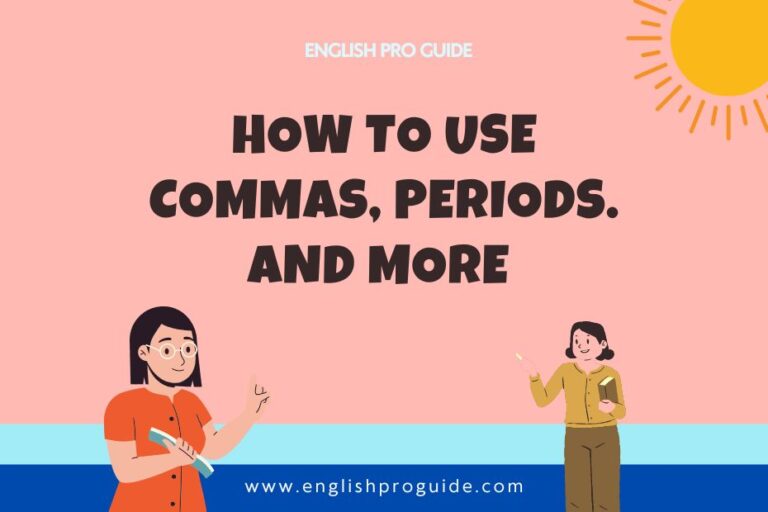How to Learn Structure Words: Tips and Techniques
Instead of saying “Sarah went to Sarah’s car,” we can say “She went to her car.” Using pronouns like “she” and “her” makes sentences sound more natural and less repetitive.
Hello, language learners! Today, we’re diving into the world of pronouns. You may have heard of these little words before, but do you know how many types there are and how each one works? This guide will answer the question: What are the different types of pronouns?
Pronouns are words that stand in for nouns in sentences. They allow us to avoid repeating the same names, places, or things over and over.
Let’s explore the different types of pronouns, complete with definitions and examples.
Types of Pronouns
| Type of Pronoun | Pronouns |
|---|---|
| Personal Pronouns | Subjective: I, you, he, she, it, we, they Objective: me, you, him, her, it, us, them Possessive (Singular): my/mine, your/yours, his, her/hers, its Possessive (Plural): our/ours, your/yours, their/theirs |
| Reflexive Pronouns | Singular: myself, yourself, himself, herself, itself Plural: ourselves, yourselves, themselves |
| Demonstrative Pronouns | Singular: this, that Plural: these, those |
| Interrogative Pronouns | who, whom, whose, which, what |
| Indefinite Pronouns | Singular: anyone, someone, nobody, everybody, anything, each, either, neither Plural: some, any, none, all, several, few, both |
This table summarizes the types of pronouns with examples for each category, illustrating how they function in different contexts.
1. Personal Pronouns
Personal pronouns are used to replace specific people or things. They can function as the subject, object, or possessive form in a sentence.
Personal pronouns also change based on whether they are singular or plural and whether they refer to a male, female, or gender-neutral subject.
Types of Personal Pronouns:
- Subjective Pronouns – Used as the subject of a sentence.
- Examples: I, you, he, she, it, we, they.
- Example Sentences:
- He is studying for the exam.
- We will meet at the park.
- Objective Pronouns – Used as the object of a verb or preposition.
- Examples: me, you, him, her, it, us, them.
- Example Sentences:
- The teacher gave us homework.
- Can you help them?
- Possessive Pronouns – Show ownership or possession.
- Examples (Singular): my/mine, your/yours, his, her/hers, its.
- Examples (Plural): our/ours, your/yours, their/theirs.
- Example Sentences:
- That car is mine.
- Is this their project?
2. Reflexive Pronouns
Reflexive pronouns are used when the subject and the object of the verb are the same person or thing. They end in “-self” or “-selves” and emphasize that the action is performed by the subject on itself.
Types of Reflexive Pronouns:
- Singular Reflexive Pronouns: myself, yourself, himself, herself, itself.
- Example Sentences:
- I taught myself to play the guitar.
- She made herself a cup of tea.
- Plural Reflexive Pronouns: ourselves, yourselves, themselves.
- Example Sentences:
- We built the treehouse ourselves.
- They enjoyed themselves at the party.
3. Demonstrative Pronouns
Demonstrative pronouns are used to point out specific people, places, or things. They indicate whether the noun being referred to is near or far in space or time.
Types of Demonstrative Pronouns:
- Singular Demonstrative Pronouns: this, that.
- Example Sentences:
- This is my favorite book. (near)
- That is a beautiful painting. (far)
- Plural Demonstrative Pronouns: these, those.
- Example Sentences:
- These are my friends. (near)
- Those are the tallest buildings in the city. (far)
4. Interrogative Pronouns
Interrogative pronouns are used to ask questions. They represent the unknown person, place, thing, or amount that the question seeks to identify.
Types of Interrogative Pronouns:
- Examples: who, whom, whose, which, what.
- Example Sentences:
- Who is at the door?
- To whom did you send the letter?
- Whose car is this?
- Which dress do you prefer?
- What is your favorite movie?
Interrogative pronouns help us gather information by replacing nouns in question form.
5. Indefinite Pronouns
Indefinite pronouns refer to people or things in a general or non-specific way. They do not point to a specific noun but to an indefinite quantity or group.
Types of Indefinite Pronouns:
- Singular Indefinite Pronouns: anyone, someone, nobody, everybody, anything, each, either, neither.
- Example Sentences:
- Anyone can participate in the event.
- Nobody knows the answer.
- Plural Indefinite Pronouns: some, any, none, all, several, few, both.
- Example Sentences:
- Some of the guests have arrived.
- Several people were at the meeting.
Indefinite pronouns are useful for referring to a non-specific quantity or group without needing exact details.
Read More: How To Teach Tier 2 Vocabulary? Boost Students’ Word Power
Why Understanding Pronouns is Essential
Pronouns are critical for clear, concise communication. They help avoid unnecessary repetition and make sentences smoother and easier to read.
Understand this different types of pronouns also allows for better grammar, which is essential for effective communication in both writing and speaking.
Personal Pronouns replace specific nouns and indicate who or what is involved in the action.
Reflexive Pronouns emphasize that the subject of the sentence is acting upon itself.
Demonstrative Pronouns help us specify objects or people in relation to distance or time.
Interrogative Pronouns allow us to ask questions and gather information.
Indefinite Pronouns let us talk about general groups, quantities, or non-specific people or things.
Each type of pronoun serves a unique role, and knowing when and how to use them can make your communication more precise and engaging.
Final Thoughts
In summary, pronouns are versatile and essential tools in the English language. By understanding the different types of pronouns and how they function, you can improve both your written and spoken language skills.
Whether you’re writing a story, asking a question, or expressing possession, pronouns make your sentences sound more natural and less repetitive.
Next time you’re writing, remember to choose the right pronoun type for the situation. Happy learning, and keep practicing!






